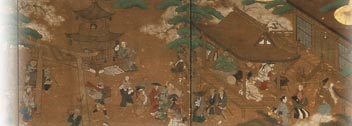Revival Screening of Les Misérables, Directed by Henri Fescourt (1925)
Outline
| date |
June 14, 2011, 18:00–20:30 |
| Venue |
Waseda University (Ono Auditorium) |
Details
IIn the Film Research Course, a 17.5 mm print of the great 1925 French film Les Misérables was digitally restored and presented to the public. Since 1905, Les Misérables has been the subject of many film adaptations around the world. This one directed by Henri Fescourt, however, most closely captures the flavor of Victor Hugo’s original novel and, as a film, represents an artistically successful work. In 1984, Cinémathèque Française in Paris completed their restoration of an original 35 mm print of the film. Divided into four parts with a running time of six hours, it is a fully restored version of the film that was given general release in France in 1925. However, a version for 17.5 mm projectors was also made and sold. The version digitally restored by GCOE is a 17.5 mm print that was sold in the Netherlands at the time the film was released. The original film was produced by the Société Pathé Frères, and when it issued the 17.5 mm version, it re-edited the original film into three parts. Because the re-edited film was intended in part for educational purposes, some scenes were cut, such as Fantine’s life of prostitution and Javert’s suicide. The print restored by Cinémathèque Française was from an original negative and has extremely beautiful images. However, because it was from a negative, it lacked the dyeing and toning of the publicly released positive print. In contrast, the 17.5 mm print is shorter (with a running time of slightly less than five hours), but retains the coloring of the original film. This, and the fact that this cinematic masterpiece has not been screened in Japan since the 1920s, makes the GCOE digital restoration and screening project highly significant. In the intermissions at the screening, research reports were presented by two associate fellows. In her paper, “The Transplantation of Les Misérables to Japanese Cinema,” TANIGUCHI Norie clarified the process of transplantation of Les Misérables to Japanese cinema in adaptations up until 1950, the last year such adaptations were made. Focusing on the early years in particular, she traced appearances of the work from newspaper-based serial novels through theatrical productions and films. OGAWA Sawako then presented her paper, “The Significance of Albert Capellani’s Les Misérables (1913) in Cinematic History.” Ogawa stated that the Capellani film marked the first time that Hugo’s original novel was faithfully adapted to the cinema. With its unusual length, it had a tremendous impact on cinema in various countries, particularly on the Autorenfilm (author's film) movement in Germany. After the screening, Professor KOMATSU Hiroshi, who is a GCOE programme member, gave a presentation titled “Henri Fescourt and the Film Les Misérables,” in which he displayed many valuable items such as actors’ contracts, publicity articles published before the film was shot, and programmes issued when the film was re-screened. The presentation prompted a reevaluation of Henri Fescourt who, in the 1920s, a period that tends to be viewed with the focus on avant-garde filmmakers, played a central role in avant-garde film theory even as he made commercial films. YAMAMOTO Ritsu, a research associate for the course, was in charge of providing the translations of the Dutch subtitles. YANASHITA Mie, one of the world’s foremost silent movie accompanists, performed on the piano during the screening, bringing the entire event to a most successful conclusion. Our deepest thanks go to Ms. YANASHITA for the wonderful accompaniment she gave to such a long, ambitious film, and to all participants who attended.
> Go To Page Top
![]()
